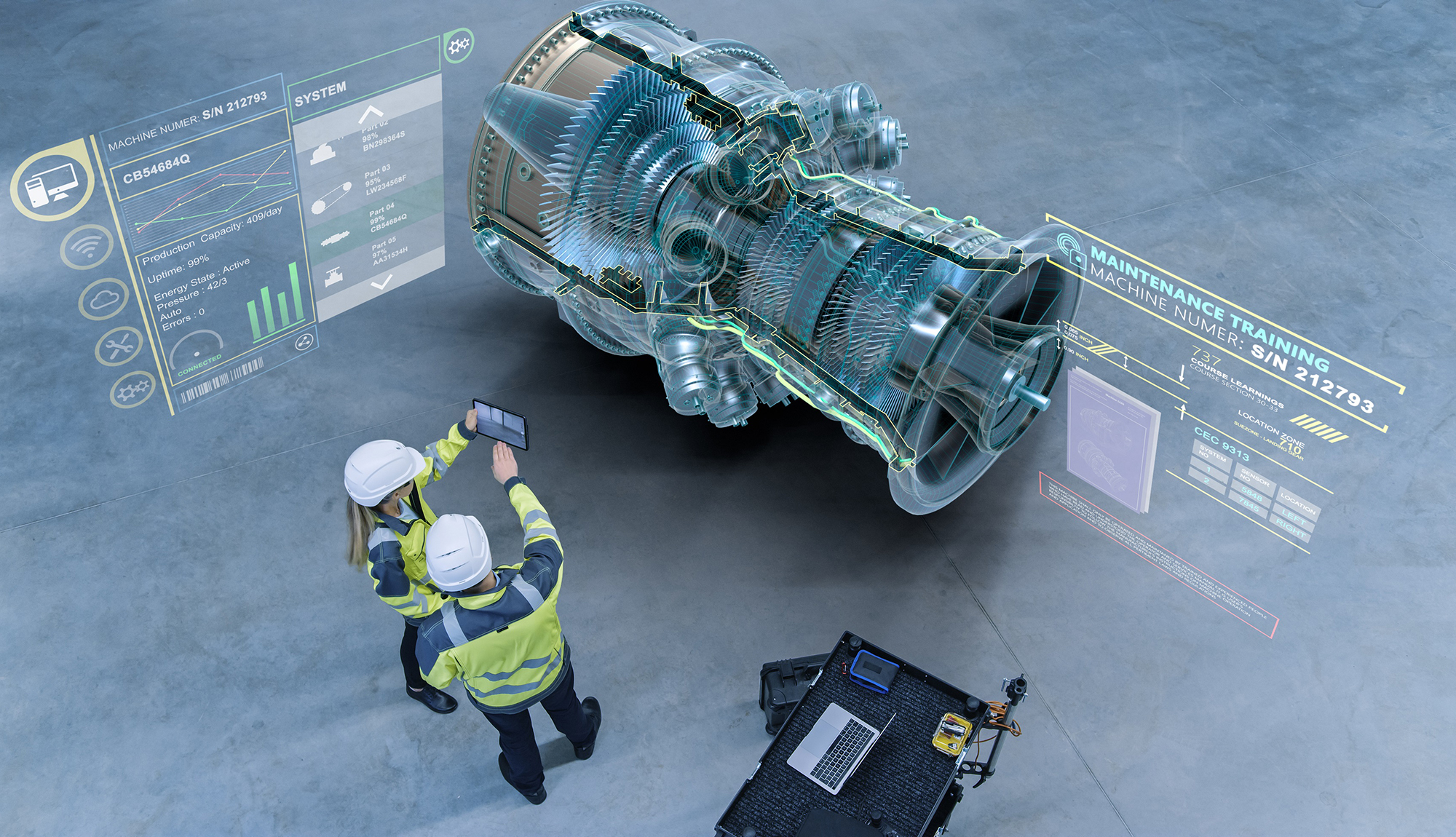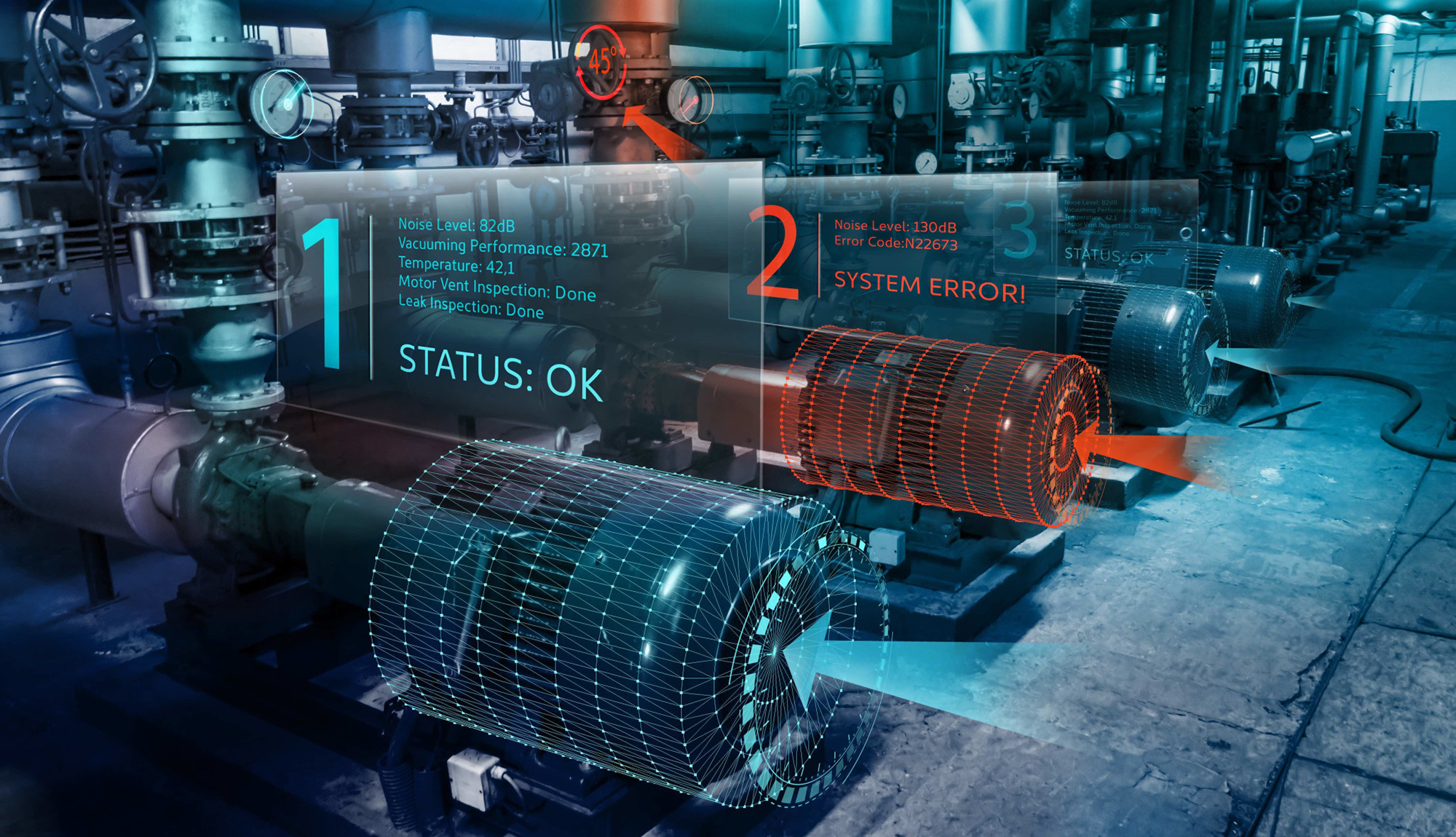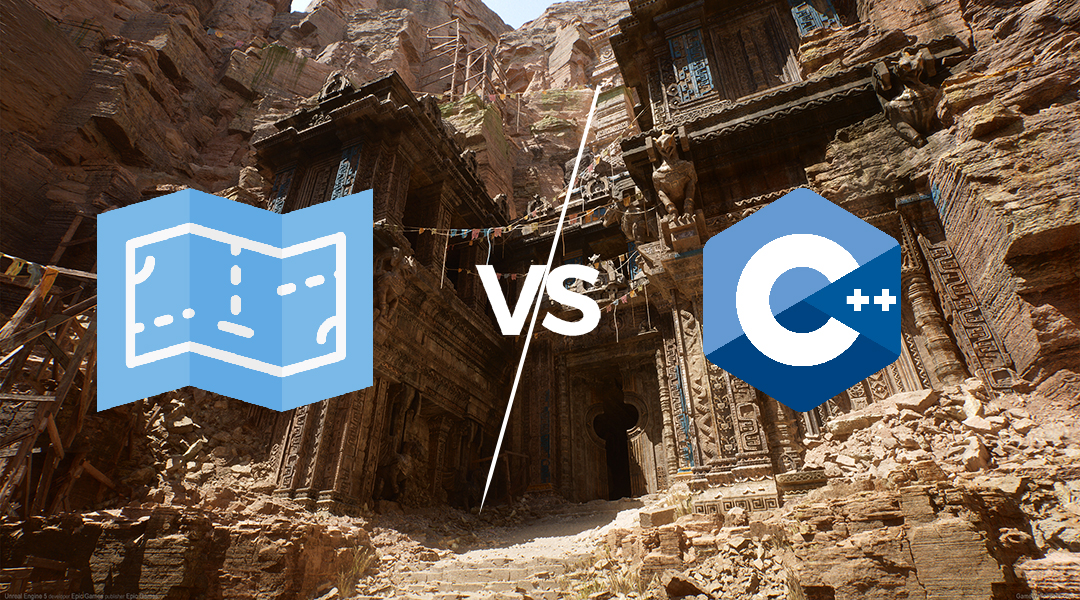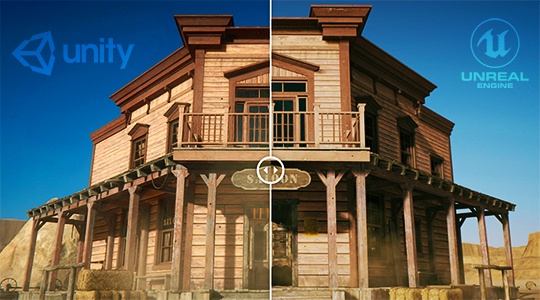Digital twin technology, particularly in the context of Unreal Engine, has emerged as a game-changer for businesses seeking enhanced efficiency and precision in their operations. A proficient digital twin development company can harness this technology to create remarkably accurate virtual replicas of physical assets or processes. These replicas serve as powerful tools for analysis, simulation, and decision-making, offering a level of detail and interactivity that was previously unattainable.
Integrating Unreal Engine in this process elevates the realism and functionality of these digital twins, enabling businesses to optimize their performance and innovate with incredible speed and accuracy. The initial phase of adopting this approach involves understanding the intricate dynamics of one's business processes and the benefits digital twins can offer in that context. Companies venturing into this territory stand to gain a significant competitive edge by leveraging the unparalleled capabilities of Unreal Engine-powered digital twins.
Understanding the Ins and Outs of Digital Twin Unreal Engine
Exploring the intricacies of digital twins in Unreal Engine reveals its transformative potential for businesses. The transformative power of this technology manifests in its capacity to redefine business operations, bringing forth a new era of precision and efficiency across multiple industries.
How Digital Twins Are Developed?

Developing digital twins involves a complex yet structured process that is adaptable across various industries. According to McKinsey, the process can be outlined in three primary steps: creating a blueprint, building the initial digital twin, and boosting its capabilities. Initially, a comprehensive blueprint is essential, detailing the types of digital twins to be developed, their intended sequence, evolution, ownership, and governance structures.
The next phase involves assembling core data products, integrating structured and unstructured data, and developing visualizations. This phase may span three to six months, focusing on building a basic digital twin and implementing one or two initial use cases.
The final step is to expand the capabilities of the digital twin by adding more data layers and analytics, often involving AI and advanced modeling techniques. This evolution allows digital twins to transition from mere representations to tools providing simulations and prescriptive insights.
Digital twin technology can be categorized into four types: component, asset, system, and process twins, each serving different functions. Component twins model individual parts, providing real-time performance data. Asset twins represent physical assets like buildings or machines, focusing on operational status and performance.
System twins model entire systems or processes, aiding in performance analysis and optimization. Lastly, process twins represent business processes or customer journeys, offering insights into customer interactions with products or services in real-time. These types of digital twins have found applications in various sectors, from manufacturing and aviation to robotics and retail, showcasing their versatility and value in modern industry.
Why Unreal Engine for Digital Twins?
Advanced visualization capabilities. Unreal Engine's state-of-the-art graphics and rendering technologies provide highly realistic and immersive visualizations critical for developing detailed and accurate digital twins.
Real-time data integration. The engine's ability to integrate seamlessly with real-time data sources makes it ideal for creating dynamic digital twins that reflect the current conditions of their physical counterparts.
Versatile application range. Unreal Engine's flexibility extends beyond gaming, making it suitable for diverse industries, including architecture, automotive, and manufacturing, where digital twins are increasingly utilized.
Robust community and support. The Unreal Engine community offers extensive resources, plugins, and support, which are invaluable for developers working on complex digital twin projects.
Continuous innovation. Epic Games' commitment to regularly updating Unreal Engine ensures that digital twin projects can leverage the latest technological advancements.
Interactive and immersive experiences. The engine's capabilities in creating interactive environments enhance user engagement with digital twins, allowing for more intuitive interaction and analysis.
Scalable and high-performance. Unreal Engine is designed to handle large-scale projects efficiently, making it suitable for digital twins that require handling vast amounts of data and complex simulations.
The Process of Creating Digital Twins in Unreal Engine
Unveiling the process of creating digital twins in Unreal Engine: a journey through meticulous planning, integration of real-time data, and leveraging the engine's advanced visualization tools.
Designing the Blueprint
Designing the blueprint for a digital twin using Unreal Engine is a crucial initial step that lays the groundwork for the entire project. This process involves several key stages:
1. Defining scope and purpose. The initial phase involves clearly understanding and defining the digital twin's purpose and scope, determining the physical processes or objects it will replicate, and the required level of detail.
2. Aligning stakeholders. Essential for ensuring the digital twin meets operational and business objectives, this step involves aligning all parties involved with the project's vision.
3. Planning data and resources. Identifying necessary data types and sources is crucial, including ensuring compatibility with Unreal Engine for data integration.
4. Selecting features and functions. Specific Unreal Engine features and functions are chosen depending on project needs, such as real-time data processing and advanced visualization.
5. Designing interaction model. Planning the user interface and experience is key to ensuring the digital twin is user-friendly and accessible.
6. Developing technical specifications. This involves outlining detailed hardware and software requirements, including specifications for Unreal Engine deployment.
7. Creating an implementation roadmap. A detailed development and implementation roadmap for the digital twin in Unreal Engine is established, including timelines and key deliverables.
8. Testing and validation planning. Developing a plan for testing and validating the digital twin against its physical counterpart ensures accuracy and reliability.
Each of these steps requires careful consideration and planning to create a digital twin successfully using Unreal Engine. The process demands a balanced approach that combines technical know-how with a clear understanding of the project's objectives and constraints.
Bringing the Twin to Life
Creating a digital twin in the Unreal Engine environment requires a smooth progression from the first design concept to its physical implementation. This revolutionary stage commences by assimilating various data streams, encompassing up-to-the-minute inputs from IoT sensors and historical data, guaranteeing the precision and dependability of the information for the optimal operation of the digital twin.
The essence of this stage is the creation of the virtual model. Developers utilize the extensive graphics capabilities of Unreal Engine to construct a highly intricate and realistic depiction of the actual object. This procedure is characterized by its careful nature, as it emphasizes faithfully replicating the attributes and actions of the physical counterpart within the virtual realm.
Concurrently, the development of interactive components and user interfaces occurs. The purpose of these components is to enhance user engagement with the digital twin, allowing stakeholders to interact with the model meaningfully.
Testing and refining are additional crucial factors to consider. As the digital replica develops, ongoing testing ensures that it remains consistent with the physical counterpart and aligns with the anticipated use cases. This iterative procedure entails modifying and refining the model following feedback and performance measures.
At last, the digital twin has reached operational status, enabling it to serve as a dynamic and interactive tool. The system commences the provision of valuable observations, facilitating the process of making informed choices and offering a digital environment for conducting experiments and engaging in exploration.
The process of transforming a blueprint into a working digital twin in Unreal Engine involves a combination of technical accuracy, innovative troubleshooting, and strategic anticipation, guaranteeing that the result is more than a digital copy but a valuable instrument for fostering creativity and enhancing effectiveness.
Unreal Engine 5 Digital Twin — Can It Be?

Unreal Engine 5 pushes the limits of technical capabilities, providing fresh opportunities in the complex interplay between digital advancement and real-world implementation.
Key Features of Unreal Engine 5
Unreal Engine 5 emerges as a powerhouse for digital twin creation, bringing advanced features that significantly enhance development. These key features streamline development and elevate the final product's quality and realism.
1. Nanite virtualized geometry. Unreal Engine 5 introduces Nanite, a revolutionary technology that allows unprecedented detail in digital environments. This feature enables the creation of highly detailed and complex models without compromising performance, a significant advancement for digital twin development.
2. Lumen lighting and reflections. Lumen is Unreal Engine 5's fully dynamic global illumination solution. It reacts to scenes and light changes, providing natural lighting and reflections in real-time, enhancing the realism of digital twins and making them more visually accurate and lifelike.
3. Temporal Super Resolution. This feature is a state-of-the-art upscaling technique, providing high-quality visuals at higher frame rates. It ensures that digital twins maintain visual fidelity even on less powerful hardware, broadening accessibility.
4. World Partition system. Unreal Engine 5's World Partition system automatically divides the game world into a grid and streams only the necessary cells. This makes managing vast digital twins more efficient, reducing the workload on developers.
5. Data Layers. This feature allows developers to create multiple scene variations within a single Unreal Engine file, like different levels or phases of a construction project. It simplifies the management and visualization of different states of a digital twin.
6. Unreal Engine Blueprints vs. C++. Unreal Engine 5 offers flexibility in development approaches: Blueprints, a visual scripting system, and traditional C++ coding. Blueprints enable rapid prototyping and development, ideal for quick iterations, while C++ offers more control and optimization for complex functionalities in digital twins.
7. Enhanced Audio. The new audio features in Unreal Engine 5, like MetaSounds, provide a more dynamic and immersive sound experience. This can be leveraged in digital twins for realistic acoustic simulations.
Thus, Unreal Engine 5's robust and versatile features set a new standard for digital twin development. Its capabilities in rendering, lighting, data management, and scripting offer developers the tools to create more detailed, realistic, and efficient digital twins.
Challenges and Solutions in Unreal Digital Twin Development

Examining the pragmatic elements of Unreal digital twin creation, we investigate the obstacles and remedies that characterize this commercial environment.
Common Challenges Faced
The complexity of data integration. Merging various data sources, such as IoT sensor data, CAD files, and real-time information, poses complex issues. The objective is to achieve a smooth amalgamation and coordination for a thorough digital replica.
Scalability. As digital twins progress in their representation of increasingly larger and more intricate systems, the issue of scalability becomes a crucial consideration. Effectively handling large datasets while ensuring optimal real-time performance is a persistent and ongoing obstacle.
The dichotomy between realism and performance. Achieving a delicate equilibrium between high-level realism in digital twins while maintaining optimal efficiency is a challenging task. Striking a balance between creating an engaging experience and maintaining seamless operation is precarious.
Interoperability. Achieving compatibility and seamless communication across various software components and systems continues to be a persistent obstacle in advancing digital twin technology. Efficient data transmission and cooperative work are necessary.
Security and data privacy. These are significant considerations when it comes to protecting sensitive information in digital twins. Preserving intellectual property and guaranteeing adherence to data privacy standards are fundamental components of digital twin advancement.
Overcoming Obstacles
Addressing the issues associated with Unreal Engine digital twin production necessitates the use of strategic methodologies and the utilization of inventive resolutions. In order to tackle the intricacy of data integration, developers employ sophisticated tools and methods, such as middleware solutions and data pretreatment, to ensure seamless data transfer across different sources.
Scalability difficulties are addressed by using effective resource allocation strategies and utilizing cloud computing solutions. This is achieved by making use of Unreal Engine's inherent scalability features, such as the incorporation of level of detail (LOD) approaches. Balancing realism and performance is facilitated by implementing optimization techniques, such as occlusion culling and LOD algorithms, in conjunction with hardware acceleration.
Interoperability difficulties are effectively addressed by adhering to established industry standards and utilizing middleware technologies to provide smooth data exchange. Emphasis is placed on ensuring security and data privacy through strong encryption, access control measures, and adherence to data protection standards such as GDPR or HIPAA.
Periodic security audits and vulnerability assessments are carried out to protect sensitive data. Within this ever-changing environment, using strategic measures and the expansive capabilities of Unreal Engine facilitates the development of effective, safeguarded, and authentic digital replicas across a wide range of sectors.
The Future of Digital Twins in Unreal Engine
The potential impact of Digital Twins in Unreal Engine on many sectors is substantial, offering the possibility of significant transformation. With the progression of technology, digital twins are anticipated to play a crucial role in redefining our interactions with both the physical and virtual realms.
An intriguing possibility lies in using digital twin in healthcare. The healthcare industry is progressively acknowledging the significance of digital twins in the representation and simulation of intricate biological systems. Digital twins can revolutionize patient care, from customized medicine to surgery planning and drug development. The graphics capabilities and real-time simulation offered by Unreal Engine have the potential to augment the precision and authenticity of medical simulations, hence facilitating more efficient therapies and enhancing patient outcomes.
Moreover, there is growing traction surrounding the notion of the "digital twin metaverse." The concept involves the creation of a cohesive virtual realm in which replicas of tangible entities, surroundings, and even people are present. The capabilities of Unreal Engine are of utmost importance when it comes to constructing realistic and linked virtual environments inside this metaverse.
Envision a metaverse whereby one may navigate intricately rendered and interactive digital reproductions of renowned locations, collaborate with colleagues inside a virtual workspace, or participate in events hosted within a virtual conference facility. The rendering capabilities of Unreal Engine can create visually impressive and captivating experiences.
The potential of digital twins in Unreal Engine expands to encompass smart cities and urban planning. With the increasing complexity of cities, the utilization of digital twins can offer significant insights into the effective management of resources, development of infrastructure, and preparedness for disasters. The capacity of Unreal Engine to generate intricate and aesthetically pleasing urban simulations might assist urban planners and policymakers in formulating judgments based on empirical evidence.
Conclusively, the potential of digital twins in Unreal Engine is teeming with possibilities. With the continuous advancement of technology, it is anticipated that digital twins will progressively enhance in complexity and be seamlessly included in diverse facets of human existence. Unreal Engine's capabilities will persistently influence the development of digital twin technologies, whether in healthcare, the coming digital twin metaverse, urban planning, or manufacturing. The capacity for invention and metamorphosis in these domains is limitless, and Unreal Engine occupies a leading position in this exhilarating expedition.
Embracing Unreal Engine Digital Twins with Program-Ace
Embracing Unreal Engine Digital Twins with Program-Ace is the gateway to unlocking the full potential of this cutting-edge technology. As a trusted software development company, we bring expertise and innovation to every project we engage in. Our track record in developing immersive digital twins and leveraging Unreal Engine's capabilities sets us apart.
By collaborating with us, you gain access to a team of experts who can tailor digital twin solutions to your specific needs. To embark on this transformative journey, contact us today. Together, we can harness the power of digital twins to elevate your business to new heights and stay ahead in the ever-evolving technological landscape.













